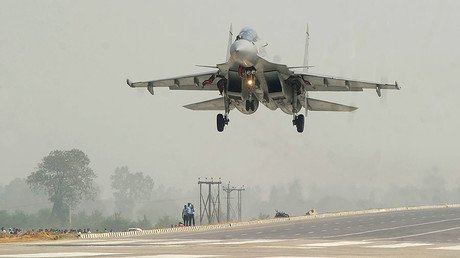Money sent by migrants to their homelands exceeds $500 billion – World Bank

The volume of money sent by foreign workers to their home countries reached a record-breaking $529 billion last year, and is set to become the main source of external financing for those states in 2019, the World Bank reports.
The amount represents an upsurge of 9.6 percent against the previous record of $483 billion fixed in 2017. Money transfers to poor and developing countries accounts for 77 percent of global remittances that reportedly reached $689 billion in 2018, up from $633 billion in 2017, according to the latest migration and development brief released by the World Bank earlier this week.
Also on rt.com Five countries with the world’s biggest gold reservesIndia retained the position of the world’s top recipient of the transfers with its nationals sending home an estimated $79 billion last year. The country saw a significant boost in remittances over the last three years, from $62.7 billion in 2016 to $65.3 billion 2017.
“Remittances grew by more than 14 percent in India, where a flooding disaster in Kerala likely boosted the financial help that migrants sent to families,” the report reads.
India was followed by China ($67 billion), Mexico ($36 billion), the Philippines ($34 billion), and Egypt ($29 billion). This year, cash transactions by migrants are expected to reach $550 billion, turning into a major channel of external inflows for low-income and middle-income countries. The total amount of money transfers to South Asia grew 12 percent to $131 billion in 2018, marking a 12 percent year-on-year growth.
Also on rt.com Trump’s trade wars will not reduce the US trade deficit – IMFTransactions to the East Asia and Pacific region increased by around seven percent to $143 billion, while Europe and Central Asia saw a significant boost of an estimated 11 percent to $59 billion. According to the global lender, Kyrgyzstan, Tajikistan, and Uzbekistan “benefited from the sustained rebound of economic activity in Russia.”
Remittance flows into Latin America and the Caribbean rose by 10 percent to $88 billion, while cash transactions to the Middle East and North Africa grew nine percent to $62 billion. Remittances to South Asia increased by 12 percent to $131 billion, while Sub-Saharan Africa saw almost 10 percent growth to $46 billion.
Also on rt.com Increase in India’s energy consumption nearly double global demand growthThe overall growth in such remittances is reportedly connected to “a stronger economy and employment situation” in the US, as well as a rebound in outbound transactions from some of the Gulf Cooperation Council (GCC) member states and Russia.
“Excluding China, remittances to low and middle-income countries ($462 billion) were significantly larger than foreign direct investment flows in 2018 ($344 billion),” the World Bank concludes.
For more stories on economy & finance visit RT's business section













